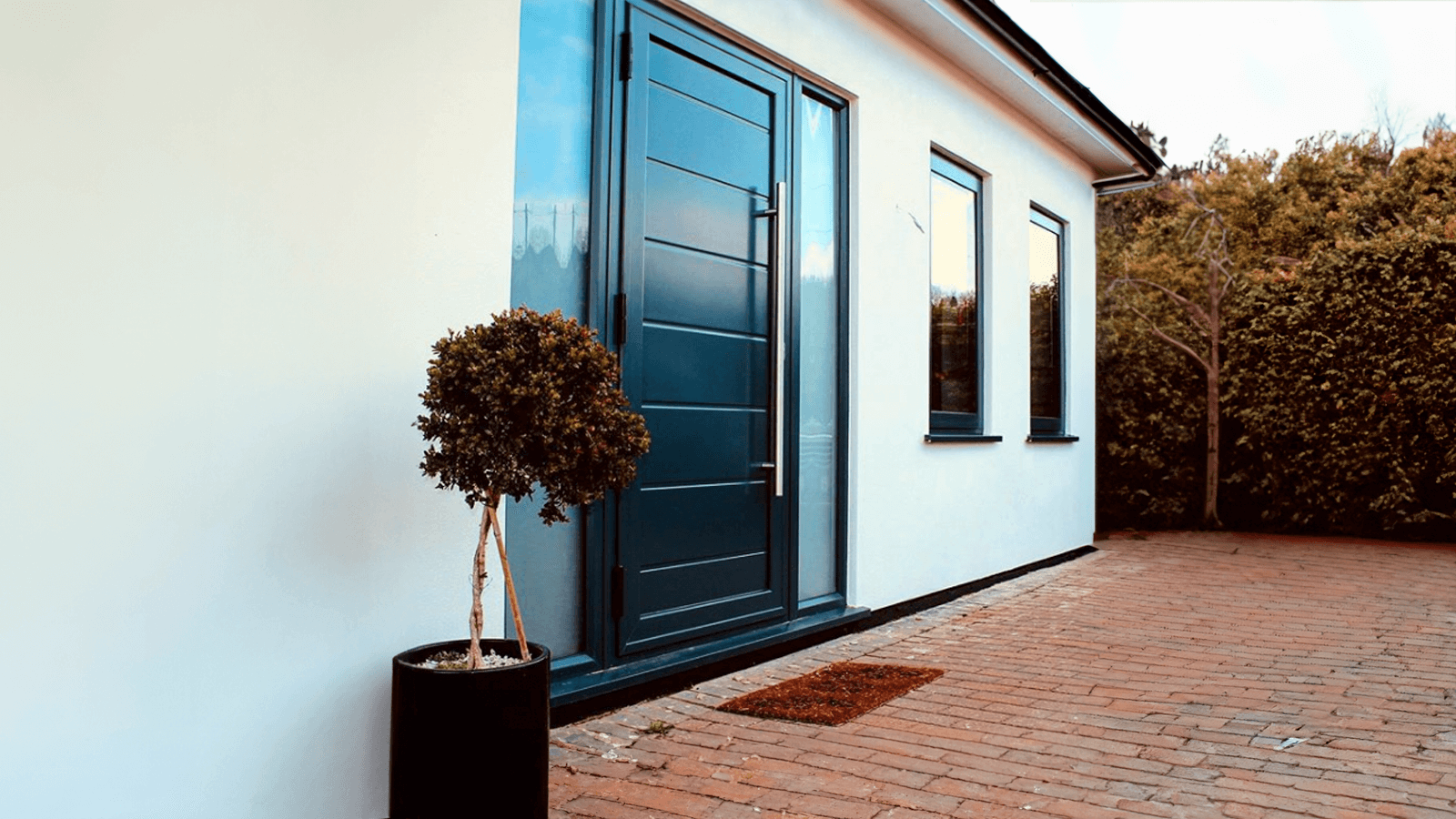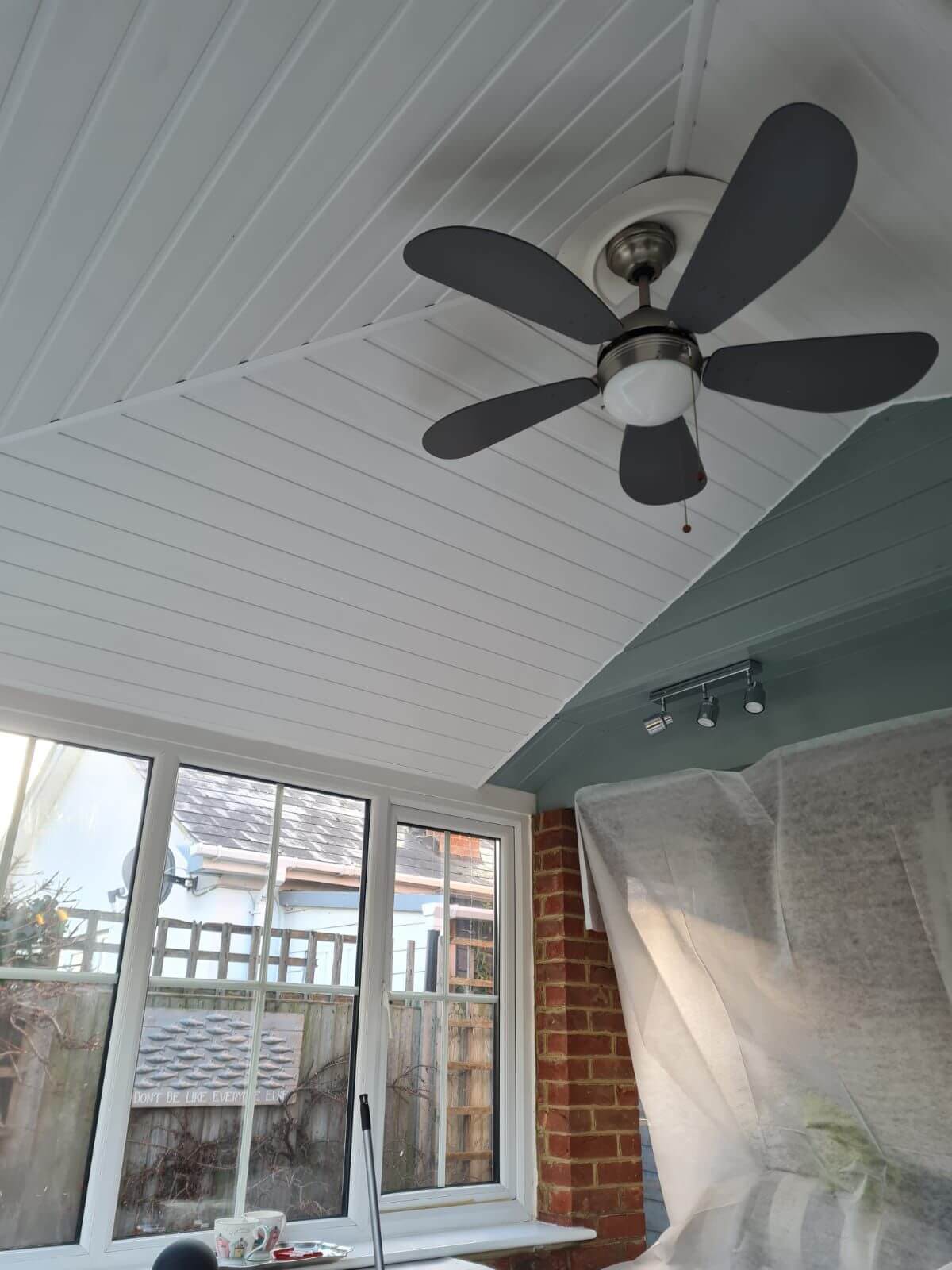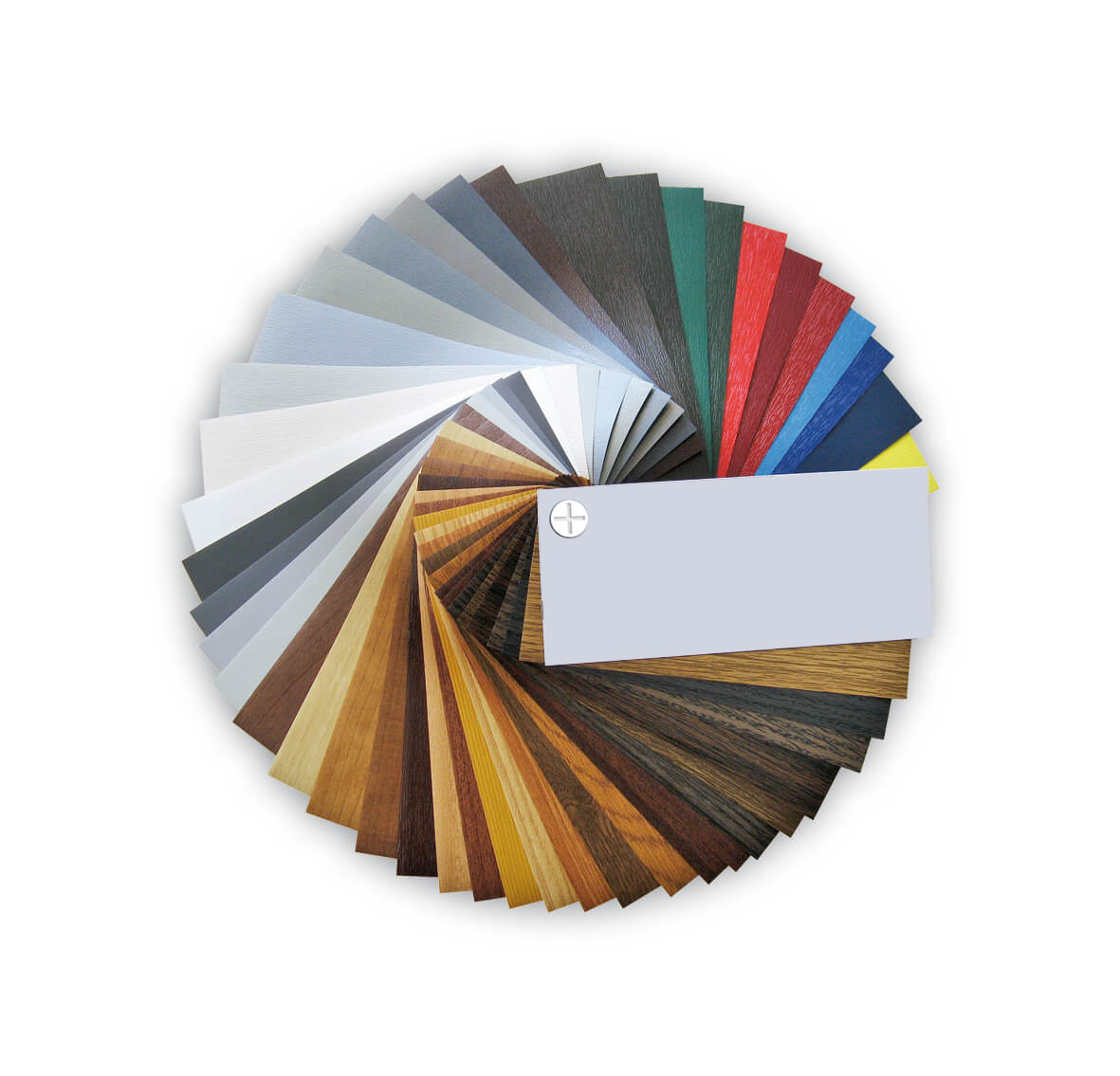Wood vs Composite Door: Which is Best?
When deciding between a wooden or composite door, there are a variety of factors you should take into account before making your final decision. Wooden doors have long been a popular choice, though in the modern world, their flaws are more visible, which has seen other options such as composite doors surge in popularity.
In centuries gone by, households in the UK were usually entered via a wooden door. As an easily accessible, sustainable material, they offer a natural yet practical touch, and date back as far as the 13th century.
However, in recent years a whole array of alternate materials have been utilised, from uPVC, to aluminium, to composite doors, and more.
Composite doors are perhaps the most similar option to the traditional wooden door, as they are constructed from a combination of materials, including timber.
But are composite doors now the better option? Or are wooden doors still in fashion? This blog will uncover all.
What is a wooden door?
Unsurprisingly, wooden doors, or timber doors, are constructed primarily from wood. There are two main types of wooden doors, the first is a solid wood door. These are made from a single piece of wood, or several pieces glued together. They are the most durable, but also the most expensive form of wooden door.
The second is an engineered wood door. These versions are constructed from a variety of materials, including a core made of medium-density fibreboard (MDF), plywood, or a lightwork wood frame, and veneer, a thin layer of real wood applied to the core for a genuine wood appearance.
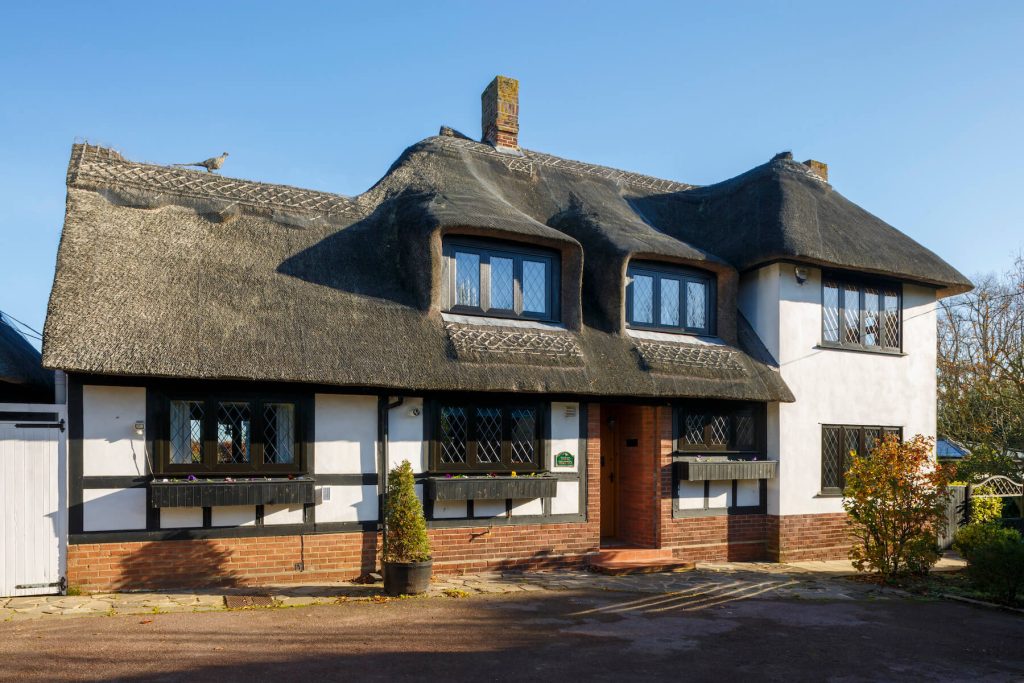
What are the benefits of a wooden door?
There are several good reasons why wooden doors have remained popular since the age of the Magna Carta’s creation. Here are a few of them.
Aesthetics
With more and more homes opting for an old-school aesthetic, wooden doors tick that box. Their unique woodgrain pattern adds warmth, character, and natural elegance, and they can be stained or painted to match your existing décor.
Functionality
Wooden doors have passed the test of time, and are renowned for being fairly durable, as they can be long-lasting providing you maintain them properly. They are also relatively soundproof and can insulate temperature to improve your home’s energy efficiency.
What are the drawbacks of wooden doors?
Although having been around for so long, there are reasons why other door materials have overtaken wooden doors, in practicality, affordability, and variety.
Maintenance Requirements
Wooden doors require regular cleaning, and the occasional refinish. This is because the paint and varnish will fade quickly, or even begin to peel off.
Another factor to bear in mind is that you’ll also need to seal and reseal your wooden door to prevent it from cracking, absorbing water, and rotting.
This can create significant issues for the entry to your home, as a swollen or rotten door may not fit in your door frame, compromising your home security.
Increased Cost
They also come at a higher cost than the vast majority of other material options.
The first reason for this is the cost of wood. Wood, especially high-quality types such as mahogany or oak, cannot be mass-produced in the same way that a material such as steel can – it’s a naturally occurring resource with limited supply.
Wooden doors also require significantly more craftsmanship, as they must be manually handcrafted, ensuring proper construction, jointing, and finishing, adding to the total labour cost – this is unlike materials easily shaped with moulds or machinery.
Weight
Solid wooden doors can be significantly heavier than other materials, making them more difficult to install, operate, and support.
They can also feel heavier to open and close.
This additional weight can require sturdier frames, hinges, and wall reinforcements for proper support, adding to the total cost and complexity of the installation.
What is a composite door?
Composite doors aim to counter all these deficiencies, having an eye for the future by combining the best of a mixture of materials. They strike a perfect balance between aesthetics, durability, security, and ease of maintenance.
Usually, composite doors have a central layer made from either a high-density foam, lightweight with excellent thermal and durability benefits, or solid timber, popular for thicker doors with their enhanced strength and security.
The outer layer is often selected with exterior appearance, weather resistance, and durability in mind. Common options include uPVC, glass-reinforced plastic, and timber veneer.
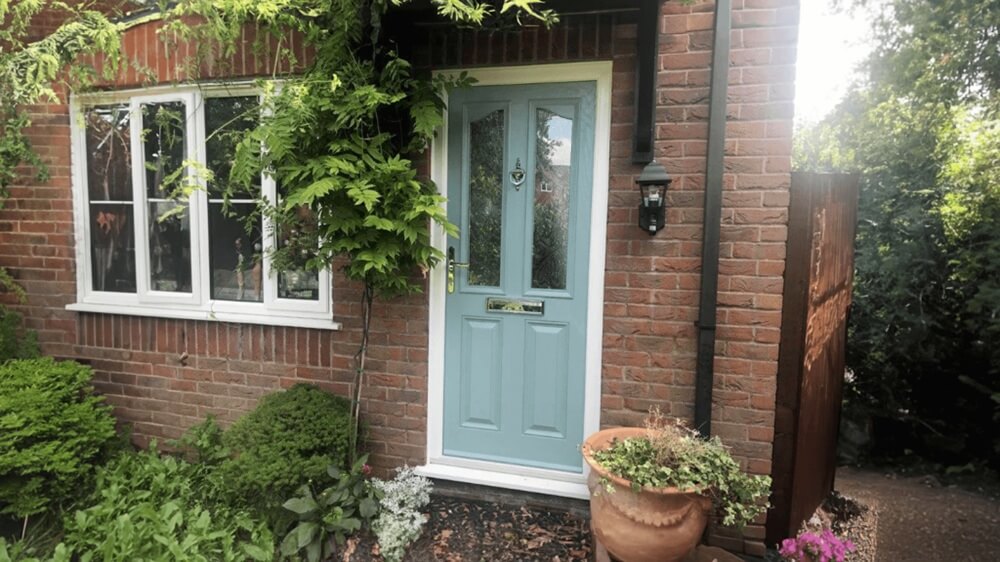
Upgrade your home with a secure and energy-efficient composite front door.
What are the benefits of composite doors?
Strength and Durability
Composite doors are almost impenetrable from the outside, evidenced by the fact that builders use composite materials in the hull construction of boats.
Due to this strength, they’re almost resistant to all types of weather, with the outer material effectively protecting the door from elements such as rain.
Excellent thermal & sound insulation
Whether you opt for a high-density foam or timber core, this will effectively insulate your home, retaining heat in the summer and cold air in the winter – contributing to cheaper energy bills.
Whilst the inner core effectively works to regulate the temperature, it also effectively prevents sound transfer.
This is especially beneficial if you live in a busy neighbourhood or main road, creating a quieter environment for your peace of mind.
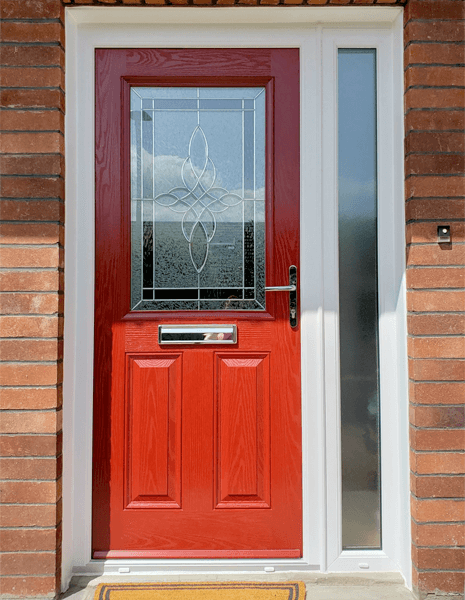
Aesthetic Options
Composite doors come in a wide variety of styles, colours, and finishes, which allows you to find an option to complement your home’s architectural style or personal preference.
Whilst it was mentioned earlier that a key perk of wooden doors was their traditional appearance, composite doors can replicate this with a timber effect.
This matches the beauty of natural wood, without those pesky maintenance needs.
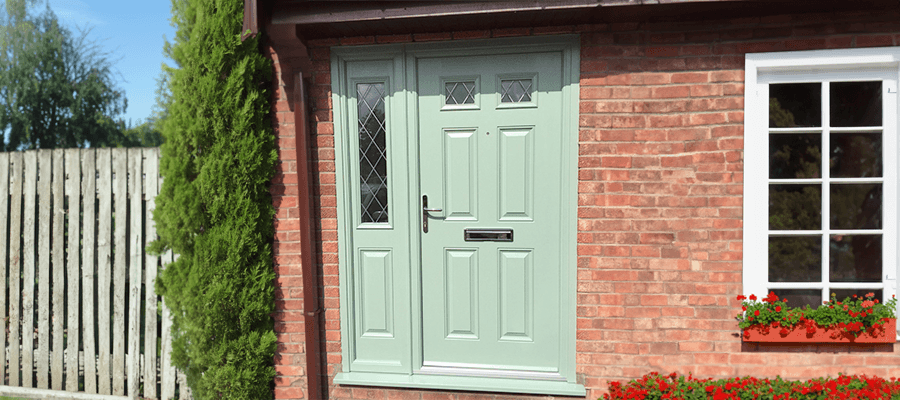
Low maintenance
Perhaps the biggest drawback to wooden doors is their high-maintenance nature, which fortunately isn’t the case with a composite door.
Whilst wood doors require regular cleaning, staining, and refinishing, all you need to worry about with a composite door to keep it in pristine condition is an occasional wipe with a damp cloth.
They can quite easily be kept looking their best for years to come, boasting longevity even in harsh weather conditions.
Wooden vs Composite Doors – Which is best?
Having gone through the pros and cons of each, it’s clear that composite doors are the better option in the modern world.
People have less time or resources to maintain these doors regularly, and thus the practicality and durability of a composite door make it the ideal choice.
If it’s the aesthetic of a timber door that you’re looking for, this can still be achieved on a composite by using a wooden finish.
Composite doors are also more secure, more energy efficient, and better insulators of sound.
Composite Doors by Amazing Glazing
If you’re looking for a new front door to your Kent home, at Amazing Glazing we’re the place for you.
As well as composite doors in a variety of finishes, we also offer French doors, sliding doors, bi-fold doors, and much more available in sought-after materials such as aluminium and uPVC.
It’s not just doors we specialise in, as we also install property enhancements such as windows, conservatory roofs, and extensions.
Our friendly team of experts would love to hear from you or help you make an informed decision on 0800 062 2103. Alternatively, you can email info@amazingglazingkent.co.uk, get a quote for free here, or visit our Whitstable showroom.
